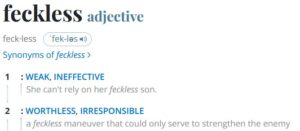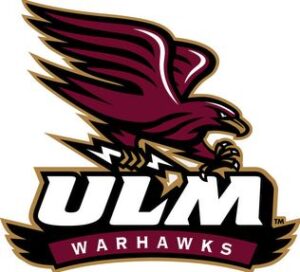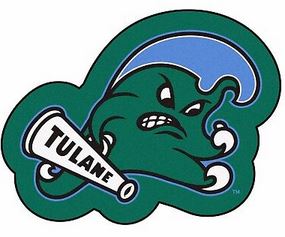Podcast: Play in new window | Download
Subscribe: RSS
Today’s word is “feckless”. Let’s verify the definition according to a respected dictionary source.

Most of the time I’ve heard the word feckless being used, it was immediately followed by the word “leadership”.
Yep, that describes the NCAA recently!
Weak

On Wednesday, the top overseer of college athletics cemented its position in the athletics wing of the Feckless Hall-of-Shame by announcing its latest ruling. Though pro golf’s PGA Tour is currently begging for a nomination into this special group, the NCAA just keeps outdoing itself with one head-scratching action (or inaction) after another.
After already opening the proverbial Pandora’s Box by allowing scholarship athletes the right to transfer from one school to another without penalty a limited number of times without having to sit out for a season, the NCAA further loosened the rules and will now permit unlimited transfers.
Here is the opening portion of this week’s declaration courtesy of the NCAA’s own website:
The Division I Council on Wednesday unanimously adopted a package of rules changes to allow transferring student-athletes who meet certain academic eligibility requirements to be immediately eligible at their new school, regardless of whether they transferred previously.
Specifically, to be immediately eligible after a transfer, undergraduate student-athletes would have to have left their previous school while academically eligible and in good standing (not subject to disciplinary suspension or dismissal) and meet progress-toward-degree requirements at their new school before competing. For graduate transfer student-athletes to be eligible, they would have to earn a degree from their previous school, leave while academically eligible and be enrolled as a full-time postgraduate student while continuing to satisfy minimum academic standards.
The story includes a quote from the NCAA’s Chair of the Council, Lynda Tealer – deputy athletics director for the University of Florida. (Note – please try to contain your laughter after reading this quote)
“With these rule changes, NCAA members continue to prioritize long-term academic success for college athletes who transfer, while supporting their opportunity to compete immediately.”
Academic success? Most of the athlete-students (that’s my new word as I say “Adios” to the term “student-athletes”) who are piling into the NCAA’s very own Transfer Portal today are leaving their current school to find more playing time and/or additional NIL money being offered to them by another school.
Ineffective

From a legal perspective, it’s understandable to see why the NCAA made this ruling.
Let’s say that a very smart (and well financed) non-athlete student with a stellar GPA wanted to transfer to a new school every year just to experience college life in different university settings. As long as that student was academically eligible to meet the transfer requirements of the new school, the move was likely to be approved. A “regular” student could, indeed, transfer three or more times if meeting the transfer requirements of the new school.
Do many traditional college students actually transfer annually – just for the fun of it? I’d wager that it would be less than 1/10th of a percent.
The NCAA was facing a dark cloud of several lawsuits which were challenging limiting the athlete-students’ transfer restrictions. Some claimed it amounted to restraint of trade while others categorized it as a violation of anti-trust laws.
The NCAA had a choice. The organization could have gone to court to vigorously argue and defend its position. Instead, the governing board did a 180 degree about-face, backed-down, and dropped any restrictions on transfers. “Cluck, cluck, cluck!”
Worthless

The NCAA’s athlete-student Transfer Portal will heat-up even more with the loosening of any transfer restrictions announced this week.
How hard is it to transfer from one college to another?
The academic requirements for high school students getting into college for the first time are fairly straightforward. The rules for transfer students, though, vary from school to school and state to state.
Let’s take a look at the transfer requirements for four institutions within the state of Louisiana.
First, let’s try to transfer into UL-Monroe.

According to ULM’s website, this is required:
To be eligible for immediate admission, a transfer student < 25 years of age must meet one of the following requirements:
- Completed an Associate’s Degree (AAS, AA, AS, AALT, ASLT, or AGS) or higher from an accredited institution
- Completed a minimum 18 hours of transfer credit with a cumulative GPA of 2.0 and completed college level Math and English with a grade of “C” or above.
- Meet first-time-first year admission requirements and be in good standing with prior institution.
Next, let’s go to Louisiana Tech University where the requirements are a little stiffer for potential incoming transfer students:

A transfer student must:
- Have earned 24 hours or more (exclusive of developmental deficiencies) with:
- Cumulative GPA of 2.25 or higher;
- No developmental deficiencies; and
- Have completed a college-level English and mathematics course;
OR
- Have earned fewer than 24 hours (exclusive of developmental deficiencies) with:
- Cumulative GPA of 2.25 and
- Meet all other admissions standards for first-time freshmen,
OR
- Have earned an Associate Degree or higher from an accredited institution.
At LSU, the academic requirements are slightly more difficult to come play ball for the Tigers:

- 30 or more transferable (academic, non-remedial) credit hours from a regionally-accredited college or university
- 2.5 academic GPA on all transferable college work attempted
- Grade of “C” or better in a college-level English course that fulfilled a general education requirement at the institution where it was taken
- Grade of “C” or better in a college-level math course that fulfilled a general education requirement at the institution where it was taken
In our fourth and final example, let’s examine the transfer requirements for a private university. If someone wants to transfer and play sports at Tulane University in New Orleans, this is what the Greenies currently require:

- Common Application
- High school transcript(s)
- College transcript(s)
- Optional: ACT or SAT test score*
When reviewing transfer applications, Tulane looks for strong transfer applicants with at least a 3.0 cumulative GPA or higher with coursework in English Composition or College Writing, higher level Mathematics (such as Calculus or Statistics), and ideally foreign language. To be eligible for admission to Tulane, all transfer applicants must have attended a regionally accredited college or university and be in good standing at their most recent education institution.
Irresponsible

There is one thing which is certain. More athlete-students will now put their names into the NCAA Transfer portal with the newly loosened transfer provisions.
This also means that the chances of seeing your favorite college football, basketball (men or women) and baseball/softball player’s stay for three or more years at the same school will continue to decline.
The athlete-students will spend time checking the NCAA Transfer Portal in hopes of grabbing more playing time and, perhaps, more NIL loot by transferring elsewhere.

Major college coaches will likely spend less time on the high school recruiting trail unless the school’s NIL collective (piggy bank) can get prospective players to sign a multi-year contract upon agreeing to play athletics for the school.
For fans of college athletics like you and me, the chances of seeing our favorite football, basketball, or diamond star for multiple years at the same school are fading fast. College fans tend to enjoy watching their favorite players grow and improve as they stay multiple years.
For television, a decline in school loyalty by key college athlete-students could start to translate into lower fan interest in college athletics over the coming decade. If college athletics continues to morph into the equivalent of minor league professional sports, only the most rabid college programs will continue to flourish.
The big-time schools will continue to get richer, while the lesser names will sink lower.
Thanks for (mostly) nothing, NCAA!

By failing to lead and get the college athletic directors and major conferences together to broker tough deals on several key issues during the past decade, the NCAA has abdicated most of its control over major college athletics.
It is only a matter of time before the largest college conferences like the SEC, Big Ten, Big 12, and the ACC (if the ACC survives, that is) negotiate their own deal and walk away from the NCAA. Many expect them to create their own organization and take the largest share of the television money along with them.
The ineffectiveness of the NCAA to adapt to changes and lead major college athletics through this period of explosive growth in television revenues may relegate the NCAA (if it survives) to a much smaller role in college athletics.
Feckless? Absolutely.

If the NCAA was a NYSE-listed stock, it is time to sell it.
The good ship NCAA appears to be aimlessly drifting and lost at sea. With its slow reactions and lack of decisive and effective leadership, the next few years may bring significant structural changes within major college sports. In other words, this could get even wilder.
Meanwhile, millions of college sports fans are being overlooked as greed dominates the thoughts and actions of the primary participants.

It is never a good idea to omit consideration of your paying customers (the fans of college athletics) during turbulent times. I learned a valuable customer service lesson early in my business career.
“The customer may not always be right, but the customer is always the customer.”
We, the customers who helped create the tremendous wealth in college athletics, are watching.

